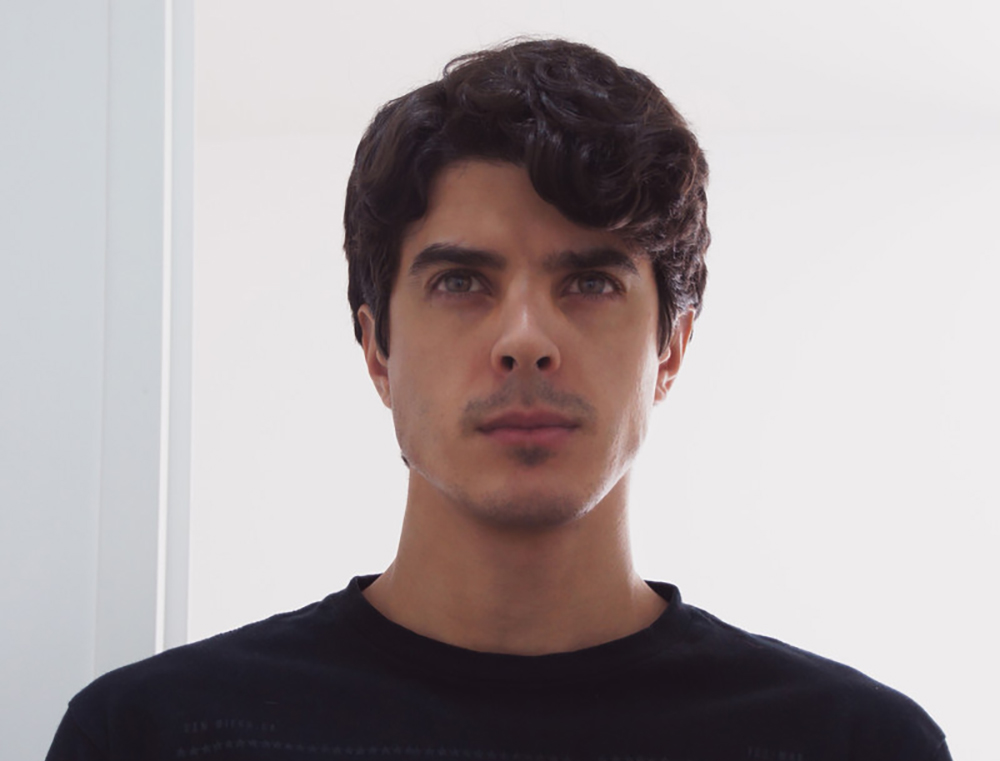The movie is a sci-fi fantasy with psychological themes interspersed with elements of time travel, and it revolves around a young teen with OCD named Rafa (played by Manuel Guitierrez) who meets a mysterious masked man named Nobody (played by Mr. Arioni himself), who claims to be a time traveler.
In this interview, Mr. Arioni opens up about what and who inspired him, about his love for “Fight Club” and Ferris Bueller, and how he paid tribute to both through this movie—and he also unravels the mystery behind the enigmatic character simply known as “Nobody.”
Who are your inspirations in the field of filmmaking?
FA: In the world of cinema, my inspirations are meticulous and obsessive filmmakers like Hitchcock, Kubrick, Park Chan Wook especially, Nolan, Fincher, De la Iglesia, Bielinsky, and also [and]especially Leone, Zang Yhimou too, some of De Palma’s films and some from Spielberg, Scorsese, and Eastwood.
Well, many, obviously. I like authors who tell entertaining and artistic stories that make you think at the same time. I dislike those who are supposedly only on the side of art and create soporific films like those of ‘Nouvelle Vague.’
I’m very happy you liked the character of Nobody. I gave him that name mainly for the reasons that he himself names in the film: because being nobody, he can be all and be no one.”federico j. arioni
How did the idea for the movie ‘Nobody is Crazy’ sprout?
FA: I wanted to tell a story that had to do with time travel, but one in which the time traveler cannot change what happens. There are three kinds of time travel stories: those in which time travelers can change the past, those in which time travelers go to another dimension, and those in which time travelers can’t change anything that happens because everything remains as it was, and if something changes it is because they had already changed it before.
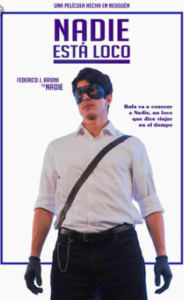
Usually in the movies they use the version in which things can be changed, but I was interested in the version in which everything is already done and it is impossible to change it. The most important, and one of my favorites of this type of movies is “12 Monkeys.”
Once I knew what I wanted to write, I created an idea: a boy came across a time traveler and he tried to change the boy’s life. Then I read several stories by Heinlein, [and]a book by Duvernois. At that time I’d already read everything Borges had written, a book called “Rant” by Palahniuk, and a comic called “El Eternauta.” I’d also seen several time travel movies, because it’s a subject that I really like. And then I decided to read everything I could find; I read articles on the Internet as well as stories. And I saw several more movies on the subject to know well what I wanted to show and what I didn’t like and wanted to change.
On the other hand, I had a story about a boy with obsessive disorders who knew a mentor on the street who taught him to let go, to live, to have fun in ways that the boy didn’t know. And I merged the two stories to create “Nobody is Crazy.”
In addition to my interest in superheroes, the psychology of the characters and the stories that can be seen several times—always finding new things—this is how the final product emerged.
I also knew I wanted to create the story with the structure of a police story, which is my favorite genre, [and]then a mystery was raised: this guy, ‘Nobody…’ is he crazy or is he a time traveler? And our protagonist had to investigate and gather the facts and clues that he obtained through the dialogues with the suspect until he resolved the question in the last act. At the same time, obviously his own personal arc was advancing, and the whole story was unfolded, mixed with philosophical characteristics, time travel, and psychological dramas.
I found the characters in ‘Nobody is Crazy’ quite similar to characters in ‘Donnie Darko,’ especially since both revolve around a young teen meeting a masked time traveling figure who will change his life. I also found some scenes bringing to mind scenes from ‘Ferris Bueller’s Day Off,’ such as when the trio are at an art gallery. Were you inspired by any of these movies or any others from the ‘80s-‘90s in any way?
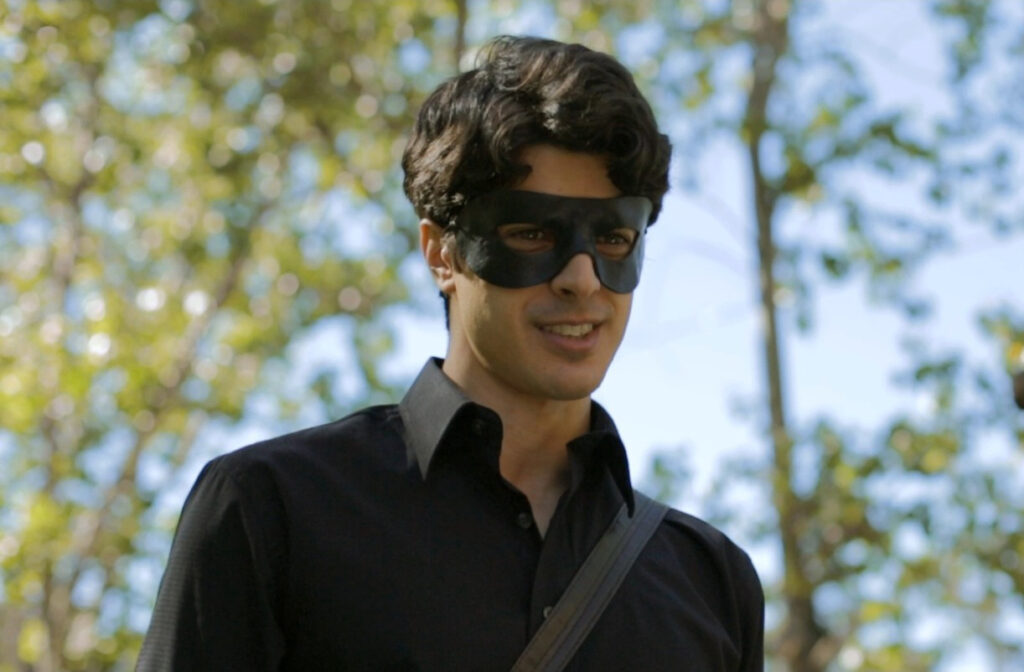
FA: I was inspired by many movies. I must say that “Donnie Darko” is not one of them. This one is more gloomy, and I think it focuses more on other issues, even though it has some kind of relationship with time travel.
From “Ferris Bueller’s Day Off” comes the idea of having these characters escape their obligations to go have fun in the city, and we did want it to pay tribute to that scene in the art gallery. From “Fight Club” there are references about psychology: the main character is not having a good time at one point in his life, and we hear his voice-over telling us his way of seeing the world. I always find moments to honor “Fight Club” because it’s one of my favorite stories; I’ve seen the movie many times, and I have about five versions of the book that I’ve also read many times. Visually, we pay tribute to [that]film, especially in the scene of the self-help group, with the flag in the background and everything.
I was also inspired by “Don Juan DeMarco,” the movie in which Johnny Depp goes around with a mask and we don’t know if he’s crazy or not, but he hangs out with someone who tries to help him. Also in “Hombre mirando al sudeste,” where we also have a main character who we don’t know if he’s crazy or not, and a character who tries to help him and understand him. And in “Lucas” (1986), in which a boy falls in love with an older girl and has an older friend who teaches him to overcome his problems.
Visually there are other tributes: Rafa wears in several scenes a red T-shirt with a round neck and jeans like Marty McFly in “Back to the Future.” And Daria is dressed as Jossie McLelland from “Career Opportunities” when she’s skating. The Mute and the Thief grab the cigars in the same way as el Indio from “For a Few Dollars More.” And I don’t remember if there is any other.
I’m fascinated in particular by the character of the masked man ‘Nobody.’ Why did you go with the name ‘Nobody’ for him instead of any other name or title?
FA: I’m very happy you liked the character of Nobody. I gave him that name mainly for the reasons that he himself names in the film: because being nobody, he can be all and be no one. That when they say that nobody can do it, he can feel that he’s that nobody, the nobody that everyone names when they speak without knowing it. Be nobody, as Ulysses says [as]he is called to escape the cyclops. The name Captain Nemo gave himself. And the name that Terence Hill has in “My Name is Nobody.”
But [it was]also to play with phrases like the one in the title “Nobody is crazy;” as if to say that no one is crazy, and as if to say that the character is crazy. But also because it seemed like an interesting name to me, a guy who goes around with a mask can’t have a normal name like Peter or Jack; he has to have a special name. For all that I wanted him to be called like that, because sometimes we are all nobody.
I’m also intrigued by Nobody’s method of time travel. Unlike most other time travelers, he has a unique way of time traveling by just meeting the figure known as Mute, so I’d like to ask why you decided to give him such a unique method of time travel instead of just giving Nobody a time machine like other time travelers?
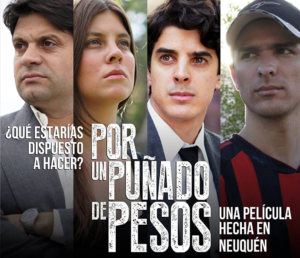
FA: It was important that Nobody travels in time in some magical way; he couldn’t have a machine; it had to be something that wasn’t technological, something that would work at any time, in any place. Something that will go unnoticed by everyone; a guy lighting a cigarette, there is nothing more common than that to see on the street.
It was essential that Nobody had to travel thanks to the Mute. Nobody can’t choose neither when he travels nor where he does it, so it was impossible that there was a time machine. And above all, the most important thing, being something that normal, that magical, that simple, that unpredictable, it could be a lie, that is the most important thing, Nobody tells Rafa that he travels in time like that and Rafa doesn’t know if Nobody is a nutcase, a liar, or if he’s telling the truth. If he had a time machine, like Marty McFly, he would just have to show it to him and there would be no doubt that he is a time traveler. In this way everything resides in what Rafa believes.
And the idea of the Mute was that he was someone mysterious, a being that could be a divinity, who spoke cryptically, as if he had already gone through all that many times, as if he was already on a higher level than the rest of the humans. The idea was that he was an inexplicable guy, like a mentor, like the principal of the school when you are a little boy, a remote and all-powerful being that you don’t know anything about.
And at the same time, he is a human dressed in a suit, a gray-haired man, who doesn’t express emotions and who simply has not yet lit his cigarette. He had to be able to be that ambivalent, a common guy or a superior being, a superman, a god, an alien. Not even Nobody, who has known him for a decade, knows anything about him. I also wanted in the dialogue that the Mute was a bit of Borges, of the philosophers, and a slight reminiscence of Jor-El speaking with Superman in the Fortress of Solitude.
I can see a lot of care was put into depicting mental health and OCD in particular, since it can be a sensitive topic to even talk about. Could you elaborate on the research that was put in for the same?
FA: I wanted to make it clear that we all have some crazy things, to a greater or lesser extent; the issue is that there are social crazy things that bring you closer to others, and on the contrary those that make you asocial. I, like many others, have some characteristics that could be considered a mild OCD, so I understand about it. This is not something very foreign to anyone’s mind; it’s not like wanting to know how an Autistic person feels. That is why it seemed to me that many would be able to feel identified with what happened to Rafa.
Being a movie that takes place most of the time outside, we had to film when the weather was favorable, so we had to film in seasons that were not cold, while it was daytime, and on days when there was no wind or rain.”federico J. arioni
In addition to the knowledge I already had about mental problems and OCD in particular, in addition to everything that I’d already seen or read in fictions in which cases of mental problems are dealt with, I also did a lot of searches on the Internet, and learned more about it. So it was not very difficult to show this illness, which is not extreme, which is not alien to the normal world.
The scenes when Rafa goes to speak with Lisandro’s psychiatrist were filmed in a real psychiatric ward, and sometimes some inmates who really had problems passed by, subjects who had to be medicated to function moderately as someone normal. What I mean is that Rafa and the other patients that we see in the film are quite close to what is considered to be normal, to be psychologically balanced, so it was not difficult to understand them and create them.
Often, I hear about how the location influenced or played a huge part in shaping the story or characters in a movie. Did you have a particular reason behind setting ‘Nobody is Crazy’ in Neuquén?
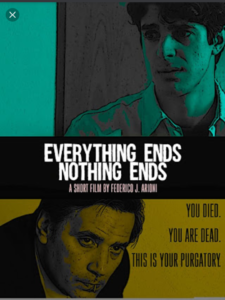
FA: There is no particular reason to have filmed in Neuquén other than that it’s our city, it’s the city we know, and the one we wanted to show because we had walked through it and we knew the beautiful places that would serve to show to someone who never goes out from his home or his comfort zone. We show the most important places from one end of the main avenue to the other, from the highlands to the river, passing through its best artistic qualities…its museum…its library.
What sorts of challenges did you face while filming?
FA: We faced many challenges while filming. Being an independent movie without a budget, we had to adapt to everyone’s times, so this takes more time to film. Being a movie that takes place most of the time outside, we had to film when the weather was favorable, so we had to film in seasons that were not cold, while it was daytime, and on days when there was no wind or rain.
Climatically the worst thing that happened to us was one day we tried to film early but there was so much fog that we had to wait for it to go away; and then the sun came out and an hour later it got cloudy and then the sun came out again, so the continuity between a shot and the next one in the same scene was missing; that was one of the hardest days. In the scenes in the park we met stray dogs all the time…they used to want to be in front of the camera, with Rafa, so we had to ask them to leave to start shooting.
And in one location we thought we were going to have three days to shoot, but it took us one day to do a single scene, and then we found out that we could only shoot one more day there…so that day we had to shoot all the other scenes. Luckily we did it.
Apart from science fiction and psychological drama, are there any other genres that you would love to try your hand at currently or in the near future?
FA: Like I said before, my favorite genre is police crime. I have several scripts written that have something to do with that genre, perhaps spiced up by something else like Film Noir that I really like or Western. I have a revenge themed trilogy…I really like revenge movies.
Usually in the movies they use the [time travel]version in which things can be changed, but I was interested in the version in which everything is already done and it is impossible to change it.federico j. Arioni
Do you have any upcoming projects in the pipeline?
FA: I have several scripts of shorts inspired by seeing the original version of “The Twilight Zone” and several feature films. The one I was about to start filming in march, before everything got complicated, was a whoddunit-type police story named “Maganto.” And I have, as I said before, the revenge and crime scripts.
Well, dear readers, with that I’ve come to an end to this insightful interview with Mr. Arioni. I highly recommend watching “Nadie está loco,” especially if you’re a sci-fi and time travel fanatic like me who also loves stories about mental health.

